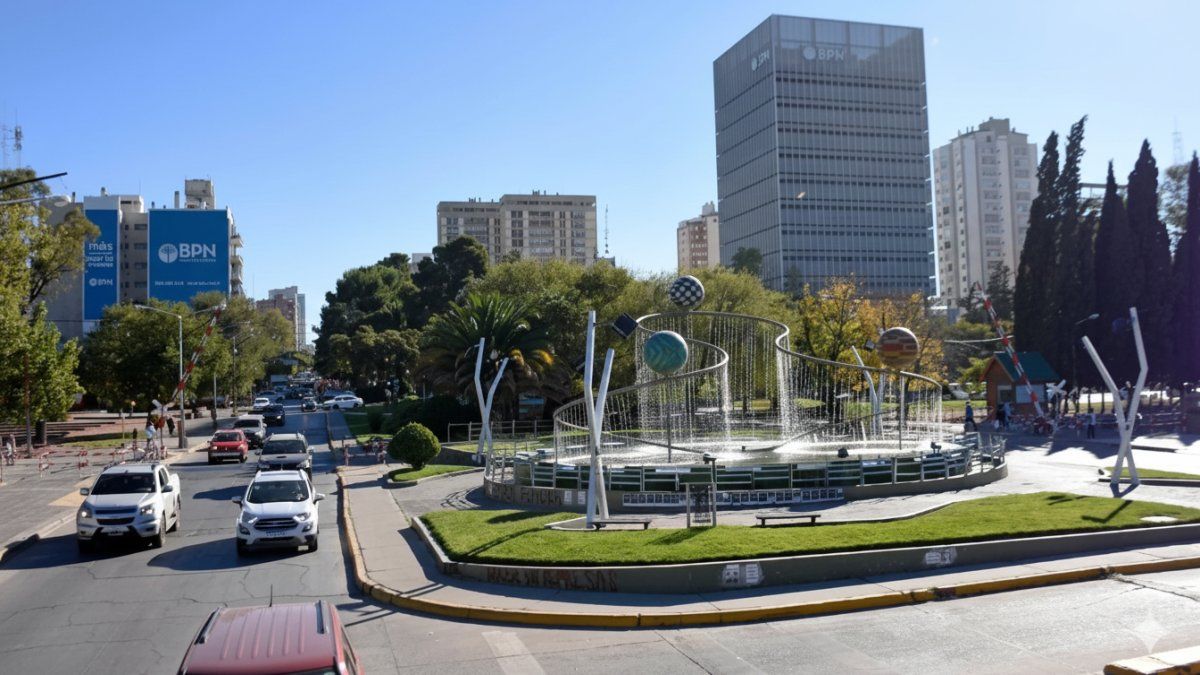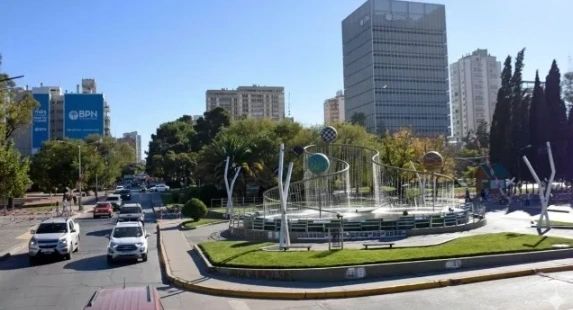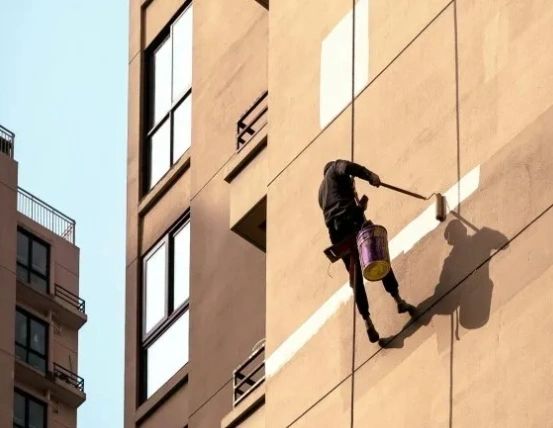BuySellBA
Administrator
Neuquén has the most expensive HOA Fee in the country: the causes and where it ranks in CABA - Ambito Financiero

Source:

 www.ambito.com
www.ambito.com
October 08, 2025
By Jose Luis Cieri
A national private report showed significant differences in buildings and gated communities. Consortiums are cutting costs and postponing maintenance due to high costs.

The iconic Fountain of the Continents at the roundabout on Avenida Argentina near Sarmiento, in Neuquén City. This city has some of the highest utility bills in the country.Claudio Oseroff
Neuquén became the province with the highest expenses in Argentina , surpassing the City of Buenos Aires in fourth place , according to a private national report that analyzed monthly spending in 200,000 units across the country. There, the average is $251,964.92 per month . The figure surprised administrators and owners because it breaks with the perception that Buenos Aires City always has the highest costs.
The survey, conducted by the Octavo Piso platform, shows that in some districts, the burden of common expenses has become unsustainable, while in others, it remains at relatively low levels. The gap is explained not only by inflation, but also by regional factors, such as the influence of the Vaca Muerta earthquake in Patagonia, the level of services included, and the age of the buildings.
For consortia, the situation means a need to settle accounts, prioritize certain fixes, and, in many cases, leave infrastructure repairs or cosmetic improvements pending ( late payments average 17% in the City ). Administrators and representatives of consortia associations emphasize that the key is to review each expense, renegotiate contracts, and use technology to reduce costs.
In this scenario, the big question is when the escalating costs might be halted. Opinions agree that there won't be widespread reductions in the short term , although there will be changes in the way buildings and gated communities are managed.
Nicolás Rossi , one of the founders of Octavo Piso, explained that the phenomenon is linked to the energy industry. “The movement generated by Vaca Muerta influences the cost of living, and that includes housing. There are reports where a small rental exceeds US$1,500, and this distortion ends up being passed on to utilities,” he noted.
The supply factor also plays a role. The scarcity of available properties drives up prices, and the same is true for outsourced services. Security, cleaning, and facility maintenance become more expensive due to a lack of local labor or due to competitive wages from other local businesses.
The average ranking of building expenses according to the platform is as follows:
Rossi explained that the contrast is due to the nature of the services. “A gated community requires permanent guards, perimeter security, paving, lagoons, and amenities. It's a much larger infrastructure than that of a building. In many cases, neighborhoods function like small cities, and they pay for that. They also tend to pay the ARBA tax as an expense, which isn't the case with real estate taxes in Buenos Aires City.”

There are consortiums that, due to high costs and the drop in revenue collection, must reschedule the painting of facades or exterior repairs for a later date. Pexels
In the City, the burden is determined by the age of the buildings and the existence of stricter regulations. “The average age is higher, which results in more maintenance. Furthermore, regulations and controls in CABA have been in place for longer, which translates into higher administrative and operating costs,” Rossi pointed out.
According to Rossi, "in less urban centers without external factors, like Vaca Muerta, the trend is for expenses to be lower. The number of units among which the costs are distributed, the age of the project, and the number of services included in the monthly expense all play a role."
However, he cautions that the representativeness of the data varies: provinces such as San Luis and Salta appear to have very low expenses, but the number of units surveyed is lower, so the average may be skewed by specific cases.
Martínez Daveño warned that structural changes are needed to reduce expenses. "The only option is to modify the cost matrix: reduce the hours of caretakers, stop hiring full-time, housed staff, rent out the door when it's free, or migrate from in-person security systems to camera or totem systems," he said.
The specialist indicated that remote control technologies and service optimization are key. "Today, significant savings can be achieved by restructuring these areas. There are already consortiums that rent vacant condominiums or install virtual security instead of guards, and with this, they manage to reduce monthly expenses," he emphasized.
This margin of difference, according to the administrator, forces owners and boards of directors to compare budgets and not settle for the first number. "Pricing research and the administrator's active oversight are tasks that contribute to the consortium's efficiency. This determines a large part of what is paid each month," he emphasized.

Administrators must do their accounts very well in order to save and ensure the building maintains good financial health.
David Loisi , president of the Horizontal Property Consortium League Foundation, was more critical and pointed out potential overpricing. He stated: "The first thing is to check that the management isn't overcharging. The fee has no relation to the value per square meter or the location. There can be two identical buildings on the same street, and in one, the price is much higher because the management isn't acting in good faith."
He recommended reviewing clauses in supplier contracts, which often include automatic increases higher than inflation. He also stressed the importance of pursuing legal action against chronic defaulters who show no willingness to pay. "Constant late payments also increase costs for those who do comply," he noted.
At the same time, Martínez Daveño emphasized that with the relative stability of recent months, some maintenance work has resumed. He concluded: "Not yet at the desired pace, but we are trying to catch up on what's pending."
www.buysellba.com

Source:

Neuquén tiene las expensas más caras del país: las causas y qué lugar ocupa CABA
Un informe privado nacional mostró diferencias fuertes en edificios y barrios cerrados. Consorcios ajustan gastos y postergan mantenimientos por altos costos.
October 08, 2025
By Jose Luis Cieri
A national private report showed significant differences in buildings and gated communities. Consortiums are cutting costs and postponing maintenance due to high costs.

The iconic Fountain of the Continents at the roundabout on Avenida Argentina near Sarmiento, in Neuquén City. This city has some of the highest utility bills in the country.Claudio Oseroff
Neuquén became the province with the highest expenses in Argentina , surpassing the City of Buenos Aires in fourth place , according to a private national report that analyzed monthly spending in 200,000 units across the country. There, the average is $251,964.92 per month . The figure surprised administrators and owners because it breaks with the perception that Buenos Aires City always has the highest costs.
The survey, conducted by the Octavo Piso platform, shows that in some districts, the burden of common expenses has become unsustainable, while in others, it remains at relatively low levels. The gap is explained not only by inflation, but also by regional factors, such as the influence of the Vaca Muerta earthquake in Patagonia, the level of services included, and the age of the buildings.
For consortia, the situation means a need to settle accounts, prioritize certain fixes, and, in many cases, leave infrastructure repairs or cosmetic improvements pending ( late payments average 17% in the City ). Administrators and representatives of consortia associations emphasize that the key is to review each expense, renegotiate contracts, and use technology to reduce costs.
In this scenario, the big question is when the escalating costs might be halted. Opinions agree that there won't be widespread reductions in the short term , although there will be changes in the way buildings and gated communities are managed.
Patagonian capital at the top of the ranking
August data placed Neuquén at the top of the list for building expenditures, above Mendoza and Catamarca, and significantly higher than the City of Buenos Aires.Nicolás Rossi , one of the founders of Octavo Piso, explained that the phenomenon is linked to the energy industry. “The movement generated by Vaca Muerta influences the cost of living, and that includes housing. There are reports where a small rental exceeds US$1,500, and this distortion ends up being passed on to utilities,” he noted.
The supply factor also plays a role. The scarcity of available properties drives up prices, and the same is true for outsourced services. Security, cleaning, and facility maintenance become more expensive due to a lack of local labor or due to competitive wages from other local businesses.
The average ranking of building expenses according to the platform is as follows:
- Neuquén: $251,964.92.
- Mendoza: $233,711.79.
- Catamarca: $214,291.21.
- CABA: $208,056.34.
- Entre Ríos: $163,874.24.
- Buenos Aires: $152,681.23.
- Missiones: $149,514.99.
- Córdoba: $148,153.54.
- Tucumán: $143,489.10.
- Jujuy: $129,035.30.
- Rio Negro: $115,606.70.
- Santa Fe: $98,395.17.
- Chubut: $96,715.70.
- Chaco: $75,456.04.
- Salta: $57,378.98.
- San Luis: $50,541.93.
The position of CABA and the contrast with the Province
The City of Buenos Aires was relegated to fourth place in the ranking for buildings, despite showing significant increases in recent months. What's striking is the difference with the Province of Buenos Aires, where the costs of gated communities far exceed those of the Capital.Rossi explained that the contrast is due to the nature of the services. “A gated community requires permanent guards, perimeter security, paving, lagoons, and amenities. It's a much larger infrastructure than that of a building. In many cases, neighborhoods function like small cities, and they pay for that. They also tend to pay the ARBA tax as an expense, which isn't the case with real estate taxes in Buenos Aires City.”

There are consortiums that, due to high costs and the drop in revenue collection, must reschedule the painting of facades or exterior repairs for a later date. Pexels
In the City, the burden is determined by the age of the buildings and the existence of stricter regulations. “The average age is higher, which results in more maintenance. Furthermore, regulations and controls in CABA have been in place for longer, which translates into higher administrative and operating costs,” Rossi pointed out.
Why some provinces pay less
The report showed that northern and central provinces have considerably lower expenditures. In these cases, experts point out that the key lies in scale. With fewer permanent staff, newer buildings, and basic services, expenses are better distributed among owners and generate lower averages.According to Rossi, "in less urban centers without external factors, like Vaca Muerta, the trend is for expenses to be lower. The number of units among which the costs are distributed, the age of the project, and the number of services included in the monthly expense all play a role."
However, he cautions that the representativeness of the data varies: provinces such as San Luis and Salta appear to have very low expenses, but the number of units surveyed is lower, so the average may be skewed by specific cases.
The view of the consortia members
For Rodrigo Martínez Daveño , a lawyer and administrator, the outlook in Buenos Aires City is not critical. “The level of expenses has normalized in recent months. Salary and rate increases have already been incorporated, and no decrease is expected in the short or medium term. However, the consortia have slowly resumed maintenance work that they had postponed for years,” he explained.Martínez Daveño warned that structural changes are needed to reduce expenses. "The only option is to modify the cost matrix: reduce the hours of caretakers, stop hiring full-time, housed staff, rent out the door when it's free, or migrate from in-person security systems to camera or totem systems," he said.
The specialist indicated that remote control technologies and service optimization are key. "Today, significant savings can be achieved by restructuring these areas. There are already consortiums that rent vacant condominiums or install virtual security instead of guards, and with this, they manage to reduce monthly expenses," he emphasized.
Practical tips and numbers that make a difference
The maintenance sector is where the greatest dispersion is observed. Martínez Daveño gave specific examples: “Monthly service for two elevators with the same technology can cost between $130,000 and $280,000. A standard drain cleaning can range from $40,000 to $60,000. And bank fees, in a 40-unit building, range from $60,000 to $130,000, depending on the institution.”This margin of difference, according to the administrator, forces owners and boards of directors to compare budgets and not settle for the first number. "Pricing research and the administrator's active oversight are tasks that contribute to the consortium's efficiency. This determines a large part of what is paid each month," he emphasized.

Administrators must do their accounts very well in order to save and ensure the building maintains good financial health.
David Loisi , president of the Horizontal Property Consortium League Foundation, was more critical and pointed out potential overpricing. He stated: "The first thing is to check that the management isn't overcharging. The fee has no relation to the value per square meter or the location. There can be two identical buildings on the same street, and in one, the price is much higher because the management isn't acting in good faith."
He recommended reviewing clauses in supplier contracts, which often include automatic increases higher than inflation. He also stressed the importance of pursuing legal action against chronic defaulters who show no willingness to pay. "Constant late payments also increase costs for those who do comply," he noted.
What is postponed and what is maintained
The financial situation led to prioritizing expenses. According to Loisi, many consortiums neglected cosmetic fixes and chose to focus on urgent repairs related to safety or health. "They make patches that prevent an immediate problem, but not a comprehensive repair. This happens with each new administration and ends up being more expensive in the long run," he warned.At the same time, Martínez Daveño emphasized that with the relative stability of recent months, some maintenance work has resumed. He concluded: "Not yet at the desired pace, but we are trying to catch up on what's pending."
www.buysellba.com

